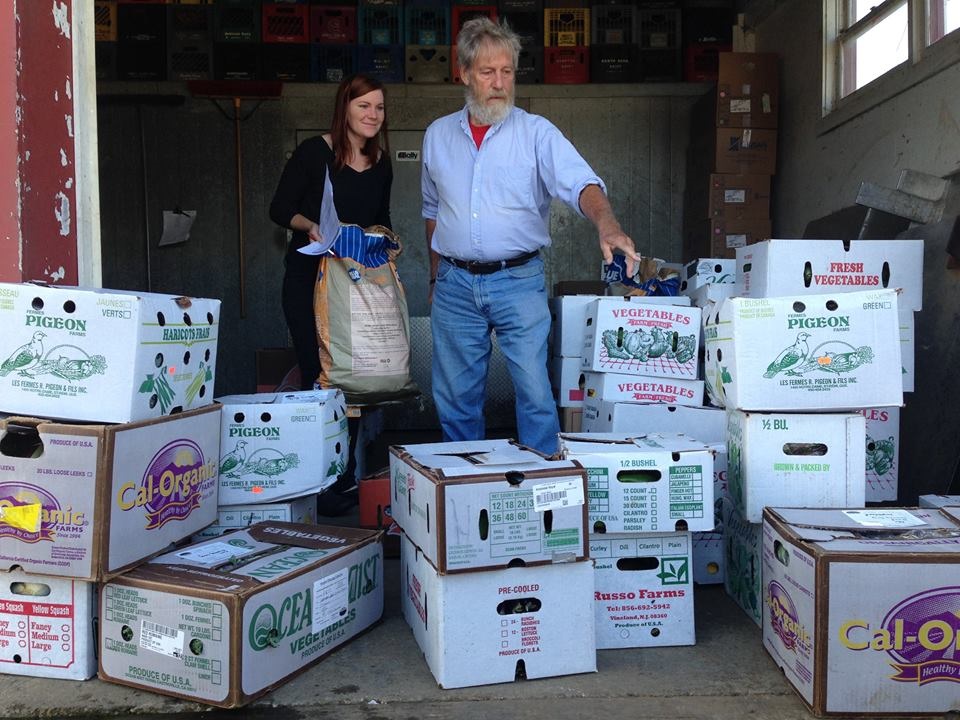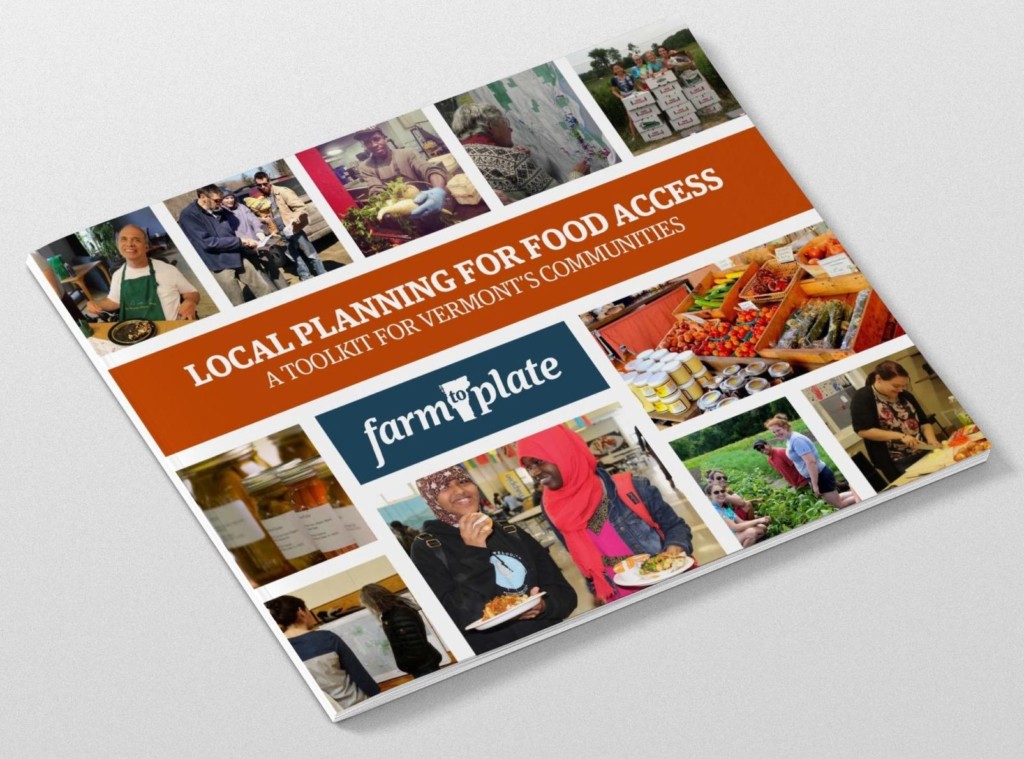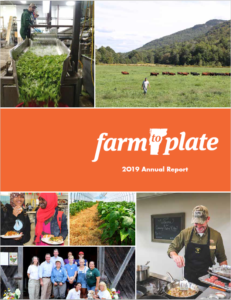Local Planning for Food Access: A Toolkit for Vermont’s Communities
January 27, 2020

Supporting the economic viability of local farms and increasing food access for all community members are often treated as separate, or even conflicting, objectives. The Farm to Plate Network, however, works to address these issues simultaneously, as both are necessary for economic stability and thriving communities. While models can be developed and sometimes implemented by statewide organizations, sustainable change depends on capacity being built within individual communities. Fortunately, Vermonters care about the food security of their neighbors and many communities are proactively looking for ways to strengthen their own local food system. The Farm to Plate Network has spent two years collecting insight from a wide variety of experts to create Local Planning for Food Access: A Toolkit for Vermont’s Communities, released in November 2019.
One of the best ways for Vermont communities to articulate their collective values and strategically address their challenges is through the local planning process. A municipal or regional plan can influence the local food system in a number of ways, from raising awareness, to prompting residents to take action on concrete projects, to establish regulations. The food system, including food access, is closely related to many other topics required or frequently addressed within these plans, such as land use, economic development, health, and more. Local Planning for Food Access is a new addition to a series of resources previously created by Farm to Plate on food systems and agricultural land use planning, with a greater focus on food access and especially on strategies that benefit both producers and those facing food insecurity.
“Like water and shelter, food access is one of those things we take for granted until it’s not there. Access to food is more than a function of being able to pay for it. It’s also a function of mobility, land use, local economic conditions and other factors. Can you get to where the food is, or can the food get to you? Do local land use regulations create challenges to food production and access? What kinds of food and food retail does the local economy currently support? Food access requires thoughtful and intentional planning and implementation. This Toolkit provides a foundation for multiple food access planning pathways for citizen planners.” —Chris Campany, Executive Director, Windham Regional Commission
This initiative has been a collaborative effort between over 20 experts from a wide range of food system organizations, state agencies, and regional commissions. The final resource:
- Makes the case for addressing food access at the local level;
- Articulates the relationship between food access, local food production, and other issues of concern to Vermont communities;
- Presents many different strategies for increasing food access, describes how a community can determine the best approach and identifies sources of support for design and implementation; and
- Highlights success stories from communities all around the state.
While much of the resource dissemination, including direct outreach to local planning commissions, will be occurring in 2020 and beyond, a number of workshops have already been presented.
For the project team, the process itself has led to a deeper understanding of the relationship between local food production and community food access, and the mix of ways in which this manifests across the state. For example, many communities could benefit from a new farmers market. However, because Vermont already has a high density of farmers markets, each of which needs a large enough customer base to make it financially viable for vendors, there are also cases where creating a new market is not an appropriate solution. The Toolkit addresses this consideration and highlights alternatives such as partnering with neighboring communities on mobile markets or helping nearby existing markets accept 3SquaresVT benefits.
Takeaways and Next Steps
This project brought together a coalition of organizations with a shared interest in empowering Vermont’s communities to address food access at the local level. Local Planning for Food Access not only provides information for those communities ready to get to work, but also illustrates the common ground between those working on food access, economic welfare, housing, transportation, and more.
Over the coming year, Farm to Plate will disperse the resource widely and provide on-the-ground advising for interested communities. Bringing a wide variety of expertise directly into communities
is key to making lasting impact, as the project has affirmed that every community’s local food system challenges and opportunities are complex and unique.
Even with Vermonters’ willingness to tackle the issue and the information and expertise available, challenges remain:
- As with most issues of local concern, many communities are eager to address food access in their visioning and planning processes, but have a harder time identifying resources to implement their preferred solutions.
- Communities are especially supportive of addressing food access with local food production. However, many of the challenges that hamper farmers’ ability to offer food at a price point competitive with non-local food, or even to physically offer their food in their own community at all, are well beyond the ability of a municipality to affect. There is only so much progress that can be made locally without broader change in the state and beyond.
Nevertheless, there are solutions that communities can implement as a valuable piece of the puzzle. And the more that Vermonters engage in collective conversation around local food access and integrate food systems into their community vision, the more desire and capacity grows to address those resource gaps and challenges at a statewide scale.
About This Farm to Plate Project Highlight
This project highlight originally appeared in the 2019 Vermont Farm to Plate Annual Report, which includes highlights on grass-fed beef industry development, local planning for food access, wholesale markets, small-scale on-farm composting, Rooted in Vermont efforts to engage Vermonters through inventive partnerships, the ways we are supporting the future of Vermont’s dairy sector, and a snapshot from the latest Census of Agriculture release. These selections are not meant to show the entirety of activity happening in the Network or the food system as a whole, but rather show the breadth of activity and variety of stakeholders and sectors Farm to Plate is engaged within strengthening Vermont’s food system.






